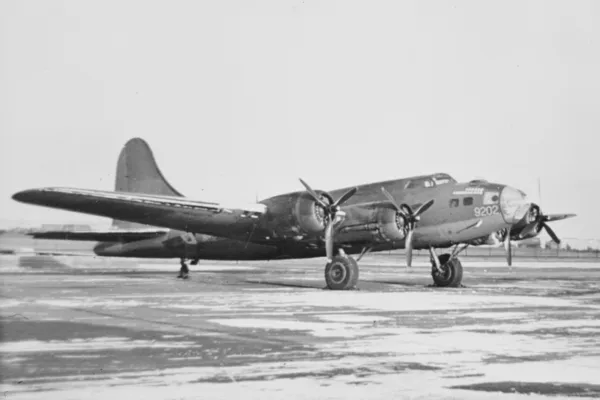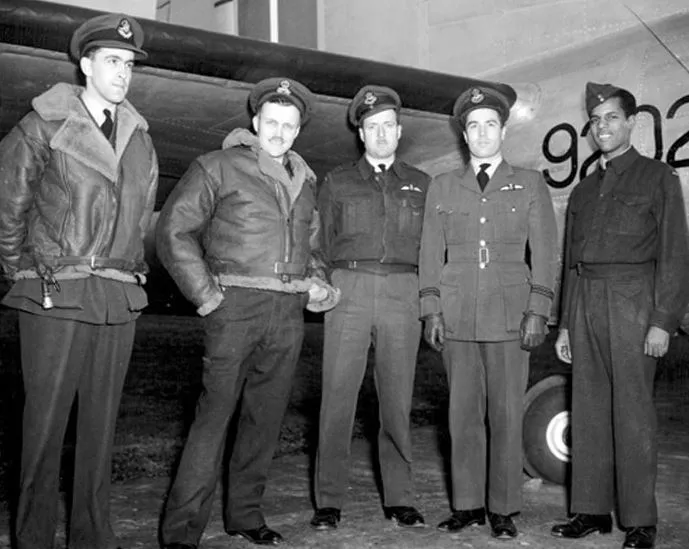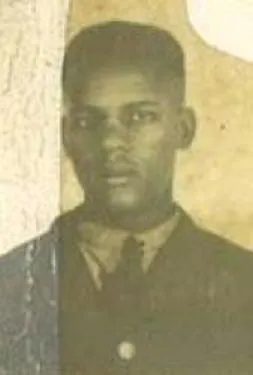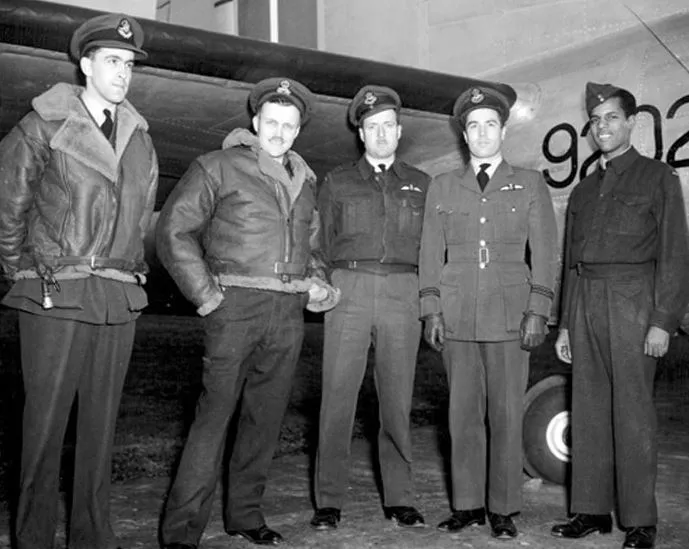Harling, Edward Pattern
Killed in Action 1945-11-04


Birth Date: 1917-April-26
Born: Calgary, Alberta
Son of Thomas William and Elsie Kate Pattern Harling, of Calgary, Alberta.
Home: Calgary, Alberta
Enlistment: Calgary, Alberta
Enlistment Date: 1940-06-28
Service
RCAF
Unit
168 (HT) Sqn- Squadron
Base
RCAF Stn. Rockcliffe, Ontario (Ottawa)
Rank
Flight Lieutenant
Position
Flight Lieutenant
Service Numbers
J/4331
Home
 Calgary, Alberta
Calgary, Alberta
First Burial
 Munster Heath War Cemetery, Germany
Munster Heath War Cemetery, Germany
Took off from Rockcliffe on the first leg to Prestwick, then on to Poland on a humanitarian mission delivering medical supplies.
Aircraft struck trees on top of high ground and crashed while flying in the base of low cloud at about 1,000 feet near Halle, Germany.
Killed includes Harling:F/Lt Donald F. Caldwell RCAF J/11098 pilot KIFA Munster Heath War Cemetery, Plot 4. Row F. Grave 18.F/Lt Norbert David Roche RCAF J/15269 KIFA Munster Heath War Cemetery, Plot 4. Row F. Grave 19.Squadron Leader Alfred Ernest Webster DFC RCAF J/4956 KIFA Munster Heath War Cemetery, Plot 4. Row F. Grave 21.Sergeant Edwin Erwin Phillips RCAF R/174196 KIFA Munster Heath War Cemetery, Plot 4. Row F. Grave 22.
This incident involved multiple aircraft:
- Flying Fortress Mk. IIIA Serial: 9202
All the above aircraft in the above list are referenced in this report.
Flying Fortress 9202
Boeing Flying Fortress B-17

The Boeing B-17 Flying Fortress is a four-engined heavy bomber developed in the 1930s for the United States Army Air Corps (USAAC). Competing against Douglas and Martin for a contract to build 200 bombers, the Boeing entry (prototype Model 299/XB-17) outperformed both competitors and exceeded the Air Corps' performance specifications. Although Boeing lost the contract (to the Douglas B-18 Bolo) because the prototype crashed, the Air Corps ordered 13 more B-17s for further evaluation. From its introduction in 1938, the B-17 Flying Fortress evolved through numerous design advances, becoming the third-most produced bomber of all time, behind the four-engined Consolidated B-24 Liberator and the multirole, twin-engined Junkers Ju 88.
The B-17 was primarily employed by the USAAF in the daylight strategic bombing campaign of World War II against German industrial, military and civilian targets. The United States Eighth Air Force, based at many airfields in central, eastern and southern England, and the Fifteenth Air Force, based in Italy, complemented the RAF Bomber Command's night-time area bombing in the Combined Bomber Offensive to help secure air superiority over the cities, factories and battlefields of Western Europe in preparation for the invasion of France in 1944. The B-17 also participated to a lesser extent in the Pacific War, early in World War II, where it conducted raids against Japanese shipping and airfields.
From its prewar inception, the USAAC (by June 1941, the USAAF) promoted the aircraft as a strategic weapon; it was a relatively fast, high-flying, long-range bomber with heavy defensive armament at the expense of bombload. It developed a reputation for toughness based upon stories and photos of badly damaged B-17s safely returning to base. The B-17 dropped more bombs than any other U.S. aircraft in World War II. Of approximately 1.5 million tons of bombs dropped on Nazi Germany and its occupied territories by U.S. aircraft, over 640,000 tons were dropped from B-17s. In addition to its role as a bomber, the B-17 was also employed as a transport, antisubmarine aircraft, drone controller, and search-and-rescue aircraft.
The RCAF acquired six used B-17E and F aircraft from the United States in 1943. Stripped of all armament and armour, the aircraft were employed by the RCAF's No. 168 Squadron on a trans-Atlantic mail service vital to the morale of overseas forces. The aircraft were progressively modified and improved for service in this transport role, and some aircraft were subsequently stripped of paint and appeared in a polished, bare metal finish. No. 168 Squadron delivered more than two million pounds of mail between December 1943 and March 1946.
As of October 2019, nine aircraft remain airworthy, though none of them were ever flown in combat. Dozens more are in storage or on static display. The oldest of these is a D-series flown in combat in the Pacific on the first day of World War II.Wikipedia and RCAF
Flying Fortress 9202
Flying Fortress Mk. IIIA 9202
Ex USAAF B-17F-30-DL, serial number 42-3160. Ordered on Purchase Order CA 000115. Mk. IIIA designation was unofficial. Taken on strength on 6 December 1943. Used by No. 168 Heavy Transport Squadron, Rockcliffe, for mail flights to Europe and North Africa. Scheduled for first trans-Atlantic mission on 14 December 1943, went u/s and replaced by 9204. Flew first mission on 22 December 1943. Fitted with flip down metal nose cone. Flew load of penicillin to Prestwick on 19 October 1945, for delivery on to Warsaw by RCAF Dakota. Probably first example of Canadian foreign aid being delivered by military aircraft. Left Ottawa for Prestwick with another load on 31 October 1945. Crashed on Haller Egge, Eggerberg (near Muenster, Germany) at 13:30 local time on 4 November 1945, struck trees on high ground flying below bad weather en route to Poland with another load of medical supplies. Crew is commemorated on plaques in Warsaw and Ottawa.1943-12-06 Taken on Strength 2022-02-07
1945-November-04 Accident: 168 Transport Squadron ROCKCLIFFE Loc: Halle Germany Names: Caldwell | Harling | Phillips | Roche | Webster
1946-02-19 Struck off Strength Struck off, after crashing near Muenster, Germany, en route to Poland with medical supplies, on 4 November 1945. 2019-08-20
 Canadian Virtual War Memorial
Canadian Virtual War Memorial



 B.17 Flying Fortress
B.17 Flying Fortress Wikipedia B 17 Bomber
Wikipedia B 17 Bomber Harold A Skaarup Web Page
Harold A Skaarup Web Page